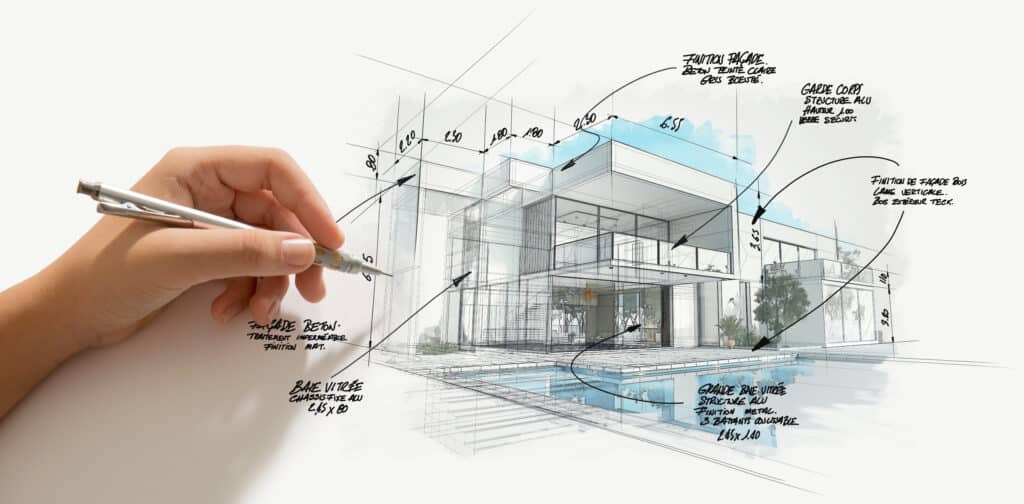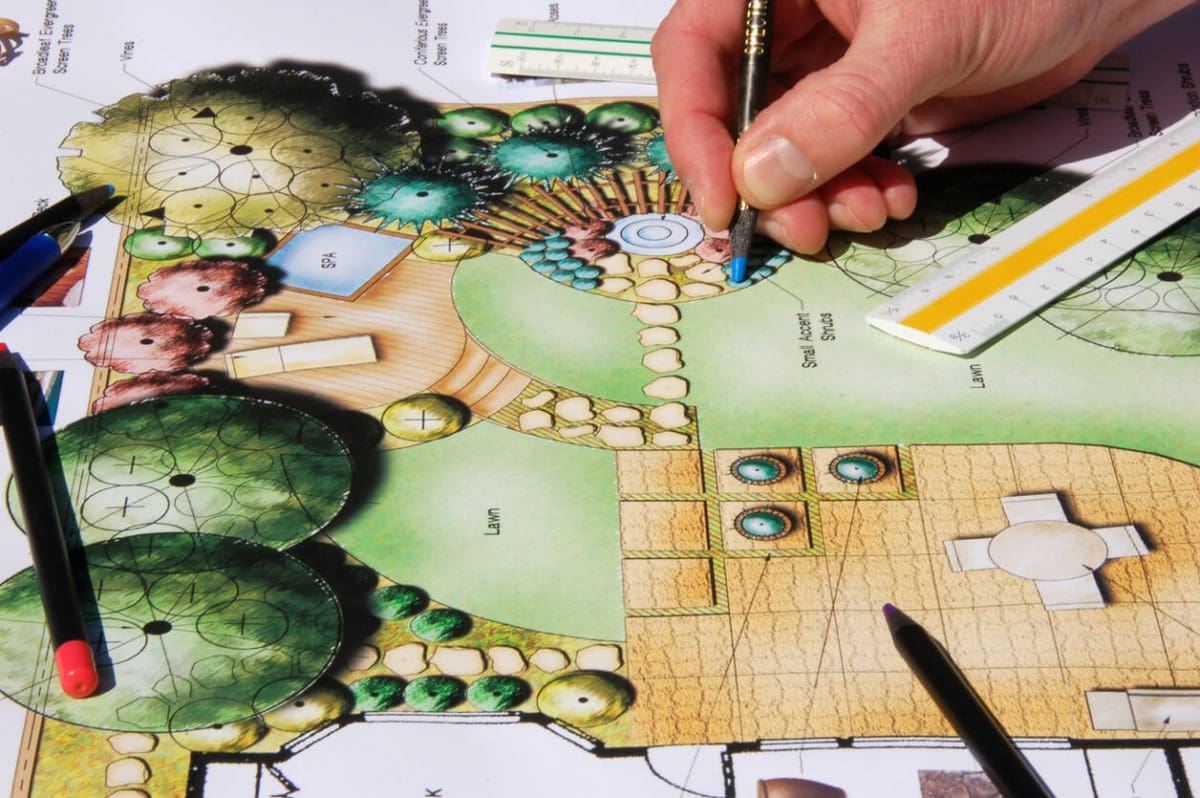Architect Rules for Designing Timeless Interiors
The Function of Sustainability and Innovation in Modern Architect Practices
Sustainability and technology are improving contemporary architecture in methods you might not anticipate. By embracing environmentally friendly products and smart developments, engineers are not just creating buildings; they're crafting settings that enhance our quality of life. This change isn't nearly looks or capability; it has to do with creating a liable method to our world's future. What's driving this improvement, and how can these adjustments effect your area?
The Significance of Lasting Design
Sustainable design is crucial not just for the environment however additionally for boosting our high quality of life. You're not simply reducing your carbon footprint; you're creating spaces that promote health and wellness and wellness when you accept lasting style. Imagine staying in a home that takes advantage of all-natural light, improves air top quality, and decreases power costs. You'll feel much more connected and comfortable to nature.
Moreover, lasting style usually brings about more powerful neighborhoods. When buildings are designed with environmentally friendly practices, they can motivate others to adhere to fit, promoting a culture of sustainability. You'll notice raised residential or commercial property values and a higher feeling of pride in your surroundings.
Last but not least, by prioritizing sustainability, you're buying the future. You're guaranteeing that future generations enjoy a much healthier world and dynamic communities. So, when you consider your next job, think of how lasting design can boost your life and those around you.
Cutting-edge Products Transforming Structure Practices
As you check out cutting-edge materials in style, you'll discover that biodegradable building and construction products are improving just how we consider sustainability. Recycled content technologies are giving brand-new life to waste, while clever material modern technologies improve building performance. These innovations not just promote eco-friendliness yet also press the limits of layout.
Naturally Degradable Building And Construction Materials
While standard building products frequently contribute to ecological degradation, naturally degradable building and construction materials are becoming a feasible alternative that transforms structure techniques. You can explore options like hempcrete, mycelium, and bamboo, which not just lower waste however likewise advertise sustainability. These products damage down normally at the end of their lifecycle, reducing landfill payments. By integrating biodegradable options into your styles, you're not just improving visual charm; you're additionally making a favorable influence on the earth. Plus, they usually require less energy to produce, even more reducing your job's carbon footprint. As you adjust to these ingenious materials, you'll find that they use toughness and adaptability, enabling you to develop structures that align with modern worths of sustainability and duty.
Recycled Content Technologies
In recent times, innovative products with high recycled material have actually reinvented structure methods, offering designers exciting brand-new options - Architect. You can currently incorporate products like recycled steel, which not only minimizes waste but additionally boasts remarkable strength. Recycled glass is an additional superb option, providing visual appeal while lessening ecological impact

Smart Material Technologies
Smart product innovations are reshaping the way you assume concerning building techniques, supplying vibrant options that adapt to changing conditions. These innovative products, such as self-healing concrete and thermochromic glass, boost structure performance and sustainability. By incorporating smart materials, you can produce energy-efficient designs that react to their atmosphere, decreasing total energy consumption.
The Assimilation of Smart Technologies in Style
As innovation evolves, incorporating wise solutions into building style becomes essential for developing effective and sustainable rooms. You can integrate smart modern technologies like developing management systems, which enhance energy usage and enhance owner comfort. Sensing units can keep track of ecological conditions, readjusting lighting and temperature level instantly based on real-time information. This adaptability not just enhances user experience however also minimizes power usage.
Incorporating Internet of Things (IoT) tools enables seamless communication amongst numerous building systems, allowing you to make data-driven choices that boost functionality. Smart materials that reply to ecological adjustments can further enhance your style, supplying vibrant remedies to ever-changing conditions.
Energy Efficiency and Renewable Resource Solutions
While lots of engineers concentrate on aesthetics, prioritizing energy efficiency and renewable resource services is necessary for sustainable layout. You can begin by including easy solar layout, which maximizes all-natural light and heat, minimizing dependence on artificial illumination and heater. Use high-performance insulation and energy-efficient home windows to lessen power loss.
Don't forget renewable resource systems-- install photovoltaic panels or wind generators to create tidy power on-site. You can likewise think about incorporating geothermal heating and cooling down systems for an extra sustainable temperature law.
By selecting energy-efficient home appliances and lighting, you'll not only reduce power usage yet also lower functional expenses for building occupants.
Including these concepts into your styles not only benefits the environment yet also enhances the structure's charm and worth. Ultimately, your commitment to power efficiency and renewable resource will establish your jobs apart in an affordable market.
Water Preservation Methods in Modern Architecture
Including water conservation approaches into modern design is vital for creating lasting buildings that decrease environmental influence. You can accomplish this by incorporating rainwater harvesting systems, which accumulate and keep rain for watering and non-potable uses. Carrying out low-flow fixtures and smart watering systems additionally minimizes water consumption, making sure reliable usage throughout the structure.
Consider utilizing drought-resistant landscape design, which needs much less water and promotes biodiversity. Integrating permeable paving products allows rainwater to penetrate the ground, reducing overflow and reenergizing groundwater supplies.
Additionally, setting up greywater recycling systems can repurpose water from sinks and showers for commode flushing or watering, more check out here conserving resources.
The Effect of Biophilic Style on Wellness
Biophilic layout brings nature inside, and you'll notice its positive effects on your health and wellness and happiness. By improving indoor air high quality and connecting you with all-natural components, these rooms can change your daily experience. Allow's discover just how incorporating these functions can enhance your overall well-being.
Nature's Influence on Health
When you integrate elements of nature right into your surroundings, it can substantially improve your psychological and physical wellness. Biophilic style, which highlights natural light, plants, and natural products, promotes a feeling of connection to the outdoors. Accepting biophilic design is a step toward a much healthier way of living.
Enhancing Indoor Air High Quality
While many individuals concentrate on aesthetics and functionality in layout, improving indoor air top quality plays a vital duty in your overall wellness. Poor air top quality can result in health problems like frustrations, fatigue, and breathing troubles. By including biophilic design aspects, you can enhance air top quality naturally. Plants, for example, not just beautify your space however additionally filter toxins and increase oxygen levels. Utilizing products with low volatile organic compounds (VOCs) additionally adds to a much healthier interior environment. Additionally, maximizing all-natural ventilation helps in reducing interior toxins. Focusing on these facets in your layout will certainly not only elevate your room but also promote a sense of calm and well-being. Eventually, an emphasis on air high quality is crucial for a healthy and sustainable living atmosphere.
Connection With Natural Environments
When you connect with natural environments in your area, you not only boost its visual appeal yet additionally considerably enhance your health. Biophilic style encourages you to include functions like plants, all-natural light, and natural materials. These components produce a soothing atmosphere, lowering anxiety and stress and anxiety. Study shows that being around nature can improve your state of mind and cognitive function, assisting you feel more effective and focused. You could discover far better air high quality and raised convenience when you invite the outdoors inside. Simple modifications, like adding a living wall surface or large home windows, can profoundly influence your experience (Architect). Ultimately, integrating nature right into your environment leads you to a much healthier, better way of living, promoting a much deeper connection to the world around you.
Future Fads in Sustainable Architectural Practices
As the globe encounters pushing ecological challenges, architects are progressively embracing innovative techniques to sustainability that redefine just how we layout and construct. You'll see a rise in biophilic layout, incorporating nature right into city spaces to improve well-being and decrease energy usage. Smart innovations, like AI and IoT, are enhancing power administration in structures, enhancing resource usage, and decreasing waste.
In addition, modular construction is gaining traction, allowing for much faster, extra reliable building processes while reducing environmental influence. Using lasting materials, such as reclaimed wood and recycled steels, is coming to be basic practice. As you explore these fads, anticipate a shift toward round style, highlighting the lifecycle of materials and advertising reuse and recycling.
These forward-thinking approaches not just address environmental concerns but additionally produce healthier, extra resistant neighborhoods. By staying educated regarding these trends, you can help form a sustainable future in architecture.
Regularly Asked Concerns
Exactly How Can Sustainability Affect Task Costs and Budgets?
Sustainability can substantially affect project prices and spending plans. You may find that preliminary financial investments in green products or modern technologies result in lasting cost savings with energy effectiveness, reduced waste, and possible government motivations, ultimately stabilizing the total costs.
What Certifications Exist for Sustainable Style?
You'll discover numerous certifications for lasting style, including LEED, BREEAM, and the Living Structure Challenge. These accreditations aid you demonstrate your dedication to sustainability and can boost your project's credibility and interest customers.
How Does Regional Society Influence Sustainable Style?
Neighborhood culture shapes sustainable style by mirroring community practices, values, and materials. You'll locate that incorporating local looks and techniques not just appreciates heritage however likewise enhances the functionality and acceptance of your building jobs.
What Function Does Customer Education And Learning Play in Lasting Practices?
Customer education and learning's vital advice for promoting sustainable methods. see it here When you notify customers about benefits, costs, and environmental impacts, you empower them to make informed choices, cultivating a collaborative approach that enhances the project's overall sustainability.

Just How Can Architects Measure the Success of Sustainability Efforts?
You can gauge the success of sustainability initiatives by tracking energy usage, evaluating product performance, and event responses from clients. Normal audits and contrasts versus benchmarks will assist you refine your techniques and display renovations efficiently.
By integrating wise products, you can produce energy-efficient layouts that react to their setting, lowering total power intake.While many architects focus on looks, focusing on power effectiveness and sustainable energy services is important for sustainable design. Biophilic design, which emphasizes all-natural light, plants, and natural products, promotes a sense of connection to the outdoors. Biophilic design encourages you to include features like plants, natural light, and natural materials. As you explore these trends, anticipate a change toward round design, stressing the lifecycle of products and advertising reuse and recycling.